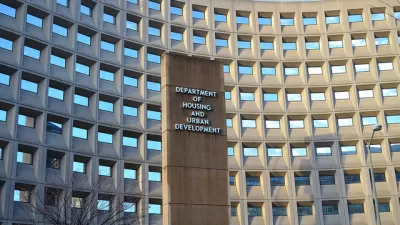A new study examines the question of how to achieve neighborhood transformation through the Choice Neighborhoods federal grant program.
A new study by the Urban Institute, for the use of the U.S. Department of Housing and urban Development (HUD), has examined the effects of the new approach to federal grant funding embodied by the Choice Neighborhoods program.
First an explanation of what makes the Choice Neighborhoods program different from previous federal funding programs according to a post written by study authors Rolf Pendall, Leah Hendey, and David Greenberg:
"Choice, which we studied in Boston, Chicago, New Orleans, San Francisco, and Seattle, and which now is in place in 12 communities across the country, superseded and extends beyond HOPE VI, which sought to replace distressed public housing with mixed-income developments. Choice’s charge is to not just fix housing, but to improve entire neighborhoods. Such an aspiration is both quantitatively and qualitatively different."
The key conclusion of the report: public housing authorities cannot achieve neighborhood transformation working alone. "Instead, as our report shows, key city agencies, mayors, and city councils have to be committed to and engaged in the transformation," according to the authors. In more detail, the post explains how greater levels of success were achieved when city leadership was involved early on in determing the answers to three key questions:
- What's the plan and who made it?
- Who's in charge?
- How do we get the biggest bang for each federal buck?
FULL STORY: Neighborhood success needs citywide commitment

Study: Maui’s Plan to Convert Vacation Rentals to Long-Term Housing Could Cause Nearly $1 Billion Economic Loss
The plan would reduce visitor accommodation by 25,% resulting in 1,900 jobs lost.

North Texas Transit Leaders Tout Benefits of TOD for Growing Region
At a summit focused on transit-oriented development, policymakers discussed how North Texas’ expanded light rail system can serve as a tool for economic growth.

Why Should We Subsidize Public Transportation?
Many public transit agencies face financial stress due to rising costs, declining fare revenue, and declining subsidies. Transit advocates must provide a strong business case for increasing public transit funding.

How to Make US Trains Faster
Changes to boarding platforms and a switch to electric trains could improve U.S. passenger rail service without the added cost of high-speed rail.

Columbia’s Revitalized ‘Loop’ Is a Hub for Local Entrepreneurs
A focus on small businesses is helping a commercial corridor in Columbia, Missouri thrive.

Invasive Insect Threatens Minnesota’s Ash Forests
The Emerald Ash Borer is a rapidly spreading invasive pest threatening Minnesota’s ash trees, and homeowners are encouraged to plant diverse replacement species, avoid moving ash firewood, and monitor for signs of infestation.
Urban Design for Planners 1: Software Tools
This six-course series explores essential urban design concepts using open source software and equips planners with the tools they need to participate fully in the urban design process.
Planning for Universal Design
Learn the tools for implementing Universal Design in planning regulations.
Ascent Environmental
Borough of Carlisle
Institute for Housing and Urban Development Studies (IHS)
City of Grandview
Harvard GSD Executive Education
Toledo-Lucas County Plan Commissions
Salt Lake City
NYU Wagner Graduate School of Public Service



























